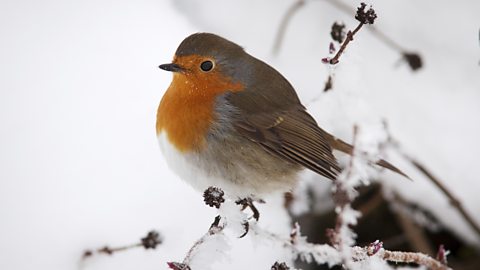Linnaean system of classification
Living organisms are classified into groups depending on their characteristics. This system was developed in the eighteenth century by Carl Linnaeus. The classification of species allows the subdivision of living organisms into smaller and more specialised groups.
Kingdoms
The first division of living things in the classification system is to put them into one of five kingdoms.
The five kingdoms are:
- animals (all multicellular animals)
- plants (all green plants)
- fungiA large group of eukaryotic organisms that contain single-celled yeasts, moulds and mushrooms. (moulds, mushrooms, yeast)
- protistA group of microorganisms that are not animals, plants or fungi but share some of their characteristics. (Amoeba, Chlorella and Plasmodium)
- prokaryoteA single-celled organism which does not have a membrane-bound nucleus. (bacteria, blue-green algae)
Further divisions
Living things can then be ranked according to this set order:
- phylumA taxonomic rank between kingdom and class (the plural is phyla). The arthropods, for example, are a phylum.
- class
- order
- family
- genusA rank in classification below family and above species.
- speciesA type of organism that is the basic unit of classification. Individuals of different species are not able to interbreed successfully.
Phylum follows kingdoms and has many different organisms, including three examples below:
- Chordata - which have backbones
- Arthropod - which have jointed legs and an exoskeleton
- Annelids - which are segmented worms
Class is an additional sub-division, which, for example, results in the Chordata phylum being divided into:
- mammals
- birds
- amphibians
- fish
- reptiles
Order follows class and, as an example, mammals can be further sub-divided into a variety of different groups such as:
- carnivores
- primates
Orders are broken down into families. Here are a few examples of families that carnivores can be divided into:
- Canidae - dogs
- Felidae - cats
Genus follows on from family. The Felidae family can be sub-divided into four genus examples:
- Acinonyx - cheetah
- Panthera - lion and tiger
- Neofelis - clouded leopard
- Felis - domestic cats
Species is the final classification stage, and the genus Panthera can be divided into:
- Panthera leo (lion)
- Panthera tigris (tiger)
As an example, the complete breakdown of the classification of lions:
- kingdom - animal
- phylum - vertebrate An animal with a backbone.
- class - mammal
- order - carnivorous
- family - cat
- genus - Panthera
- species - leo
There are many ways to remember this order, for example using the mnemonic:
The binomialHaving two parts to a name. In the binomial system of classification, each organism is named for its genus then its species. system of naming species uses Latin words. Each name has two parts, the genus and the species.
Bi- means two, for example a bicycle has two wheels. Nom means name. Therefore binomial means 'two name'.

Human beings belong to the genus Homo, and our species is sapiens - so the scientific binomial name is Homo sapiens.
The binomial system is important because it allows scientists to accurately identify individual species across the world without needing to know the scientist's home language. The grouping of families was added to allow the large number of new species to be included in this system. Linnaeus' original ideas have been adapted, but continued to be accepted and as new species are identified they can be fitted into the current classification system.
Originally, Linnaeus couldn't distinguish between different types of organisms such as algaeA group of organisms that photosynthesise but lack the complex range of cell types and organs found in land plants. Most algae are aquatic. All have chloroplasts., lichenAn organism that is part fungus and part algae or cyanobacteria. Lichen grow in exposed places such as rocks and can be used as an indicator species for air pollution., fungi, mossesSmall plants that grow in damp or shaded places. and fernA type of plant that produces spores instead of seeds or flowers.. The inability to examine such organisms in detail made classifying of these organisms as different species difficult at that time.
As more scientific equipment became available, it allowed scientists to examine organisms in more detail and note important features, such as cell structure. This allowed more divisions in the classification system to be created. The advancement of technology further helped to develop Linnaeus' classification system.